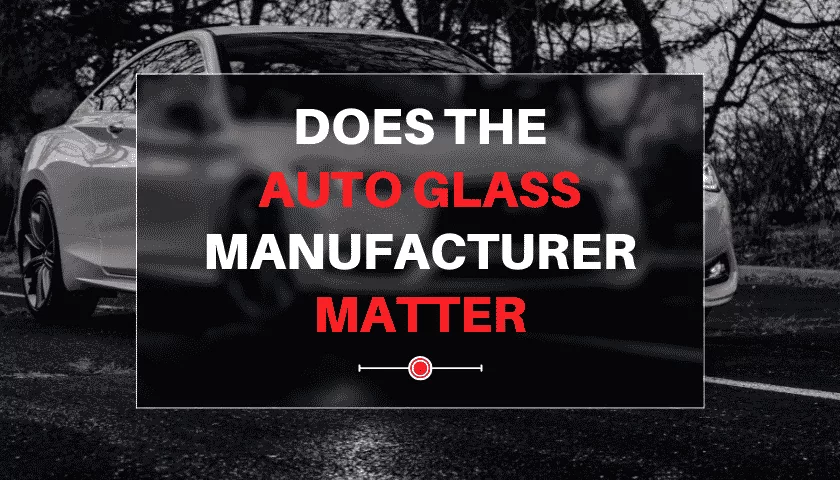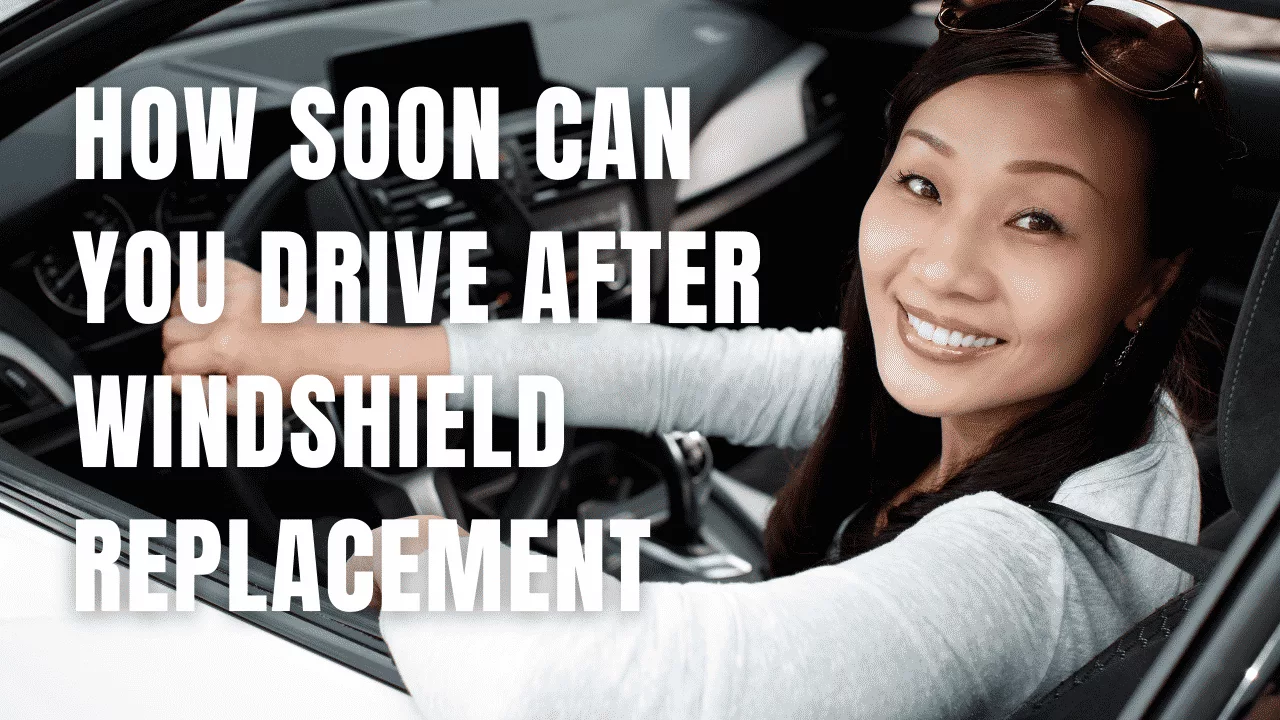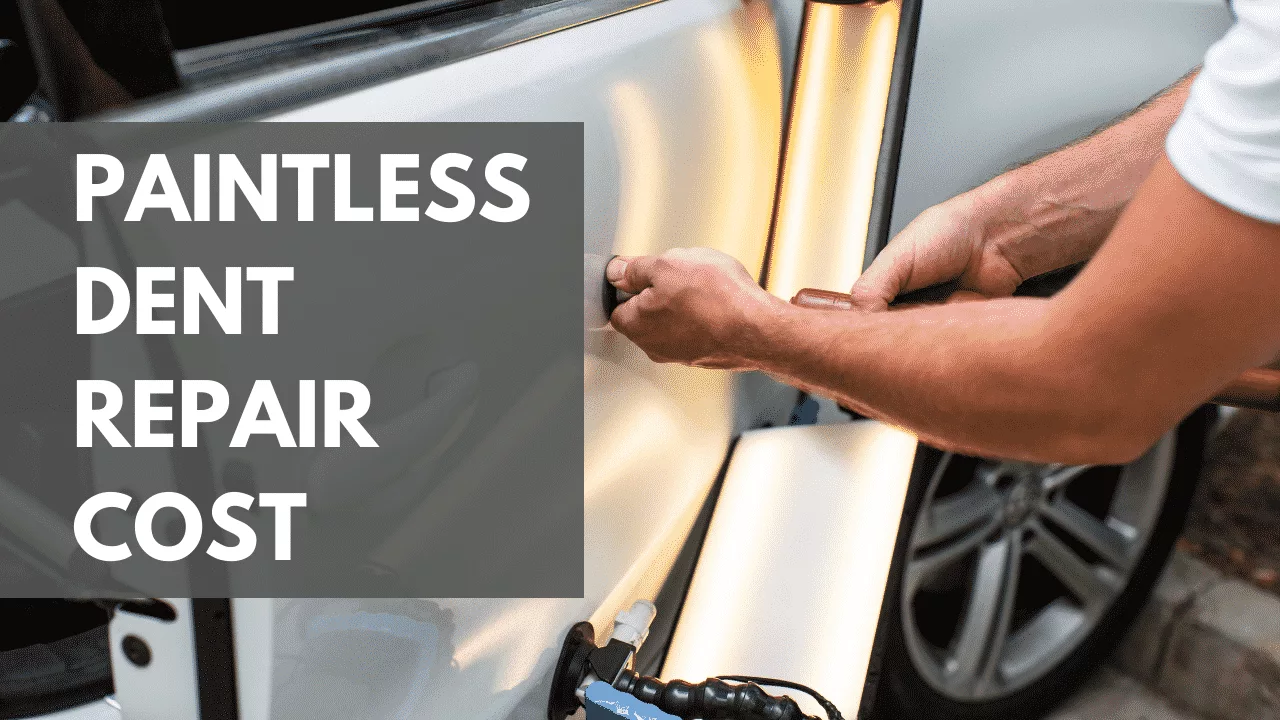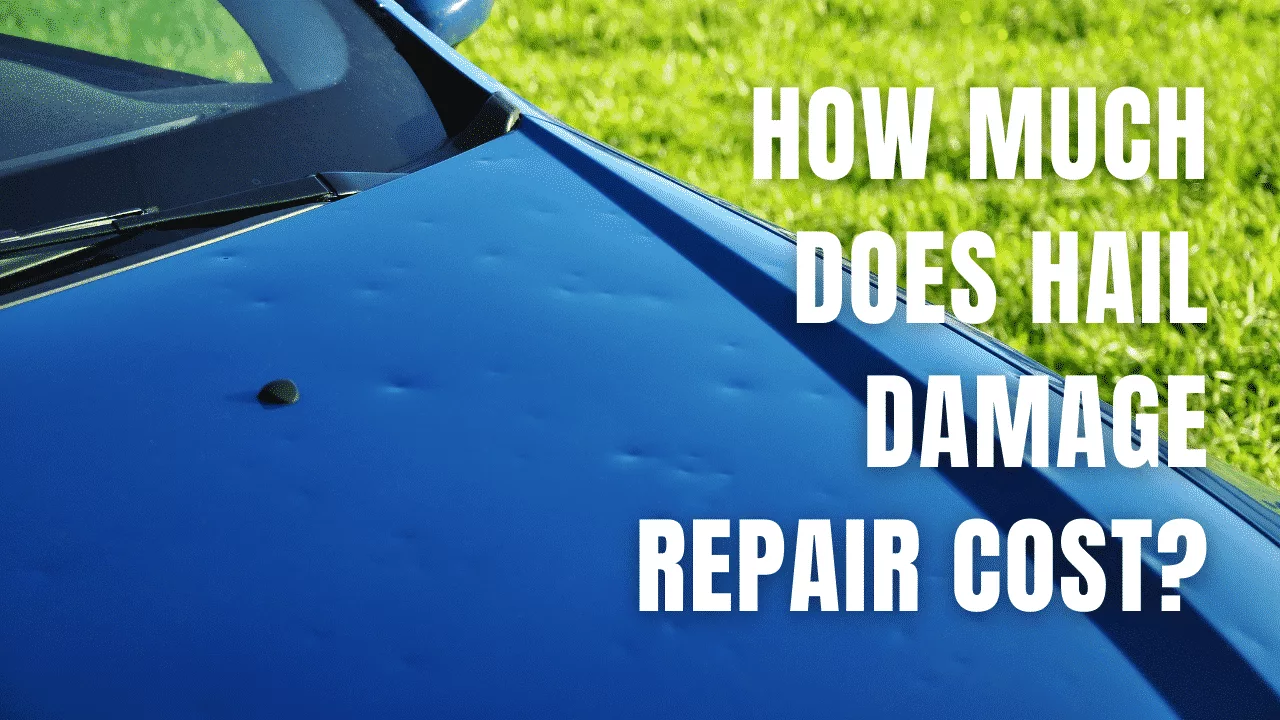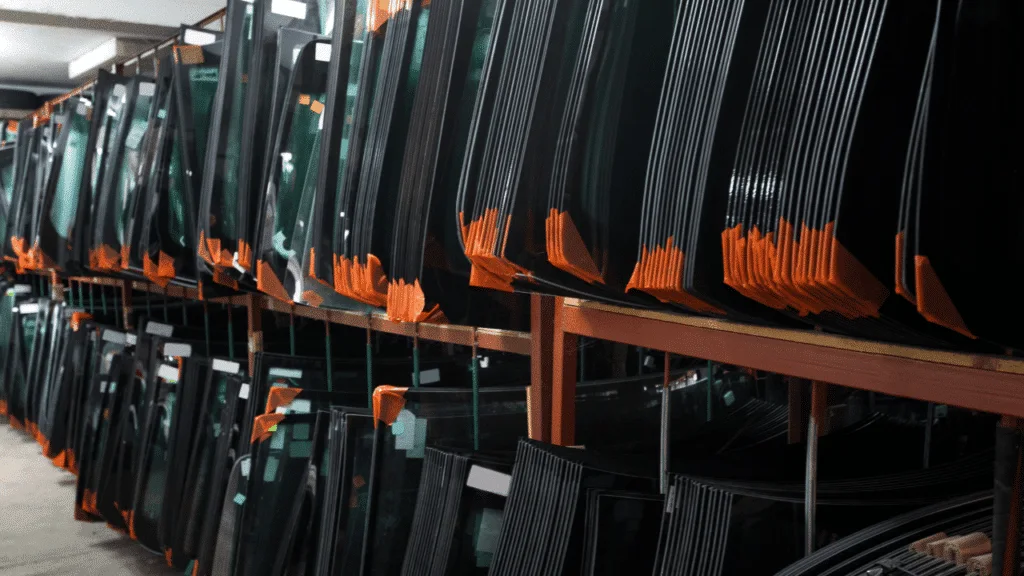
When it comes to windshield replacement cost, many vehicle owners face a tough choice: should you go for an OEM (Original Equipment Manufacturer) windshield or an aftermarket option? This decision can significantly impact your budget and the quality of your vehicle‘s glass. In this article, you will learn about the differences between OEM and aftermarket windshields, factors that influence costs, and how these choices affect your insurance coverage. By understanding these aspects, you can make an informed decision that minimizes noise and maximizes value for your vehicle.
Key Takeaways
- OEM windshields ensure a precise fit and maintain vehicle safety features
- Aftermarket windshields can vary in quality and may compromise safety systems
- Warranties on OEM products provide added peace of mind for vehicle owners
- Insurance coverage may favor OEM windshields, potentially lowering out-of-pocket costs
- Long-term value is often higher with OEM windshields due to durability and resale potential
Understanding OEM and Aftermarket Windshields

OEM windshields are original equipment manufacturer products, designed specifically for your vehicle by brands like Pilkington. In contrast, aftermarket windshields are produced by third-party companies and may vary in quality. Understanding the key differences in manufacturing and how they impact windshield replacement costs can help you make informed decisions, especially when considering your insurance policy.
Defining OEM Windshields
OEM windshields, or original equipment manufacturer windshields, are produced by the same companies that supply the glass for your vehicle when it is manufactured. These windshields are designed to meet the exact specifications of your car, ensuring proper fit and structural rigidity. When you choose OEM glass, you can be confident that it will perform as intended, maintaining the safety features of your vehicle, including systems like adaptive cruise control that rely on precise sensor alignment.
Using OEM windshields can also help preserve the value of your vehicle. Since these products are made in the factory, they often come with warranties that guarantee their quality and performance. This can be particularly important if you plan to sell your car in the future, as potential buyers may prefer vehicles with original parts. Understanding the benefits of OEM windshields can guide your decision-making process when considering replacement options:
- Exact fit for your vehicle
- Maintains structural integrity
- Compatible with advanced safety features
- Warranty coverage for peace of mind
What Are Aftermarket Windshields?
Aftermarket windshields are produced by third-party manufacturers and are designed to fit a variety of vehicle models, including popular options like the Toyota Sienna. While these aftermarket auto glass products can be more affordable than OEM options, their quality can vary significantly. It’s essential to research the manufacturer and ensure that the windshield meets safety standards, especially if your vehicle has features like a heating element that requires precise installation for optimal performance.
When considering an aftermarket windshield, it’s important to check if it comes with a warranty. A warranty can provide peace of mind, ensuring that you are covered in case of defects or installation issues. While aftermarket options may save you money upfront, understanding the potential trade-offs in quality and compatibility with your vehicle‘s systems is crucial for making an informed decision.
Key Differences in Manufacturing
The manufacturing process for OEM windshields involves strict adherence to the specifications set by the vehicle manufacturer, ensuring that the glass fits perfectly and integrates seamlessly with advanced systems, such as sensors used in vehicles like the Acura. This precision is crucial for maintaining the safety features of your car, as any misalignment can affect the performance of these systems. In contrast, aftermarket windshields may not always meet the same rigorous standards, leading to potential issues with fit and functionality.
When considering replacement glass, it’s essential to understand that OEM auto glass typically comes with a warranty that covers defects and installation problems, providing you with added security. Aftermarket options may offer lower prices, but the variability in quality can lead to complications down the line, especially if your vehicle relies on specific sensor alignments for safety features. Weighing these factors can help you make a more informed decision about which type of windshield is best for your needs:
- OEM windshields ensure precise fit and compatibility with vehicle sensors.
- Aftermarket windshields may vary in quality and performance.
- Warranties on OEM products provide peace of mind.
- Cost differences can influence your choice, but consider long-term implications.
Choosing the right windshield is just the beginning. Next, you’ll want to understand what drives the costs behind these crucial pieces of glass.
Factors Influencing Windshield Costs

When considering the costs of OEM versus aftermarket windshields, several factors come into play. Material quality and strength significantly impact the durability of windshield glass, while technological features and add-ons, such as those related to cruise control and other electronics, can affect the overall price. Additionally, brand reputation and certification play a crucial role in ensuring safety and reliability. Understanding these elements will help you make an informed decision about your windshield replacement options.
Material Quality and Strength
The material quality and strength of a replacement windshield play a significant role in determining its overall cost. OEM windshields are typically made from high-quality glass that meets strict safety standards, ensuring durability and resistance to impacts. In contrast, aftermarket options may vary in material quality, which can affect their performance and longevity. When selecting a windshield, consider how the material will impact soundproofing and the overall driving experience, as lower-quality glass may lead to increased noise levels inside the vehicle.
Additionally, the inspection process for windshields can reveal differences in material strength between OEM and aftermarket products. A thorough inspection can help you identify any potential weaknesses in the glass, which is crucial for maintaining safety features in your vehicle. Understanding these factors can guide your decision-making process, ensuring you choose a replacement windshield that not only fits your budget but also meets your safety and performance needs:
Technological Features and Add-Ons
When considering windshield replacement, the technological features and add-ons can significantly influence the overall cost. OEM windshields often come equipped with advanced features such as integrated sensors for lane departure warnings or adaptive cruise control. These features are designed to work seamlessly with your vehicle‘s systems, ensuring optimal performance and safety. In contrast, aftermarket glass may not always support these technologies, which can lead to compatibility issues and additional costs if modifications are needed.
Additionally, the brand of the windshield can affect your deductible when filing an insurance claim. If you choose an OEM windshield, your insurance may cover a larger portion of the cost due to the higher quality and safety standards associated with these products. On the other hand, opting for aftermarket glass might result in a lower initial price, but you should consider the potential long-term costs related to repairs or replacements if the glass does not meet the necessary specifications.
Brand Reputation and Certification
When selecting a windshield, brand reputation plays a significant role in determining quality and reliability. OEM windshields are produced by well-known manufacturers who adhere to strict safety standards, ensuring that the glass meets the specifications required for your vehicle. In contrast, aftermarket windshields may come from lesser-known brands, which can lead to variability in quality and performance. Choosing a reputable brand can help you avoid potential issues down the line, such as poor fit or compromised safety features.
Certification is another critical factor to consider when comparing OEM and aftermarket windshields. Certified products have undergone rigorous testing to meet safety and performance standards, providing you with peace of mind. When you opt for an OEM windshield, you can trust that it has been certified for use in your specific vehicle model. On the other hand, some aftermarket options may lack proper certification, which could affect their compatibility and safety. Always check for certification labels to ensure you are making a sound investment in your vehicle‘s safety.
Understanding the factors that influence windshield costs is just the beginning. Next, you’ll see how the choice between OEM and aftermarket windshields can impact your wallet and your safety.
Price Comparison: OEM vs Aftermarket Windshields
When considering windshield replacement, understanding the price differences between OEM and aftermarket options is essential. Typical costs for OEM windshields can be higher due to their quality and fit, while average prices for aftermarket options may offer a more budget-friendly alternative. Case studies on cost differences will provide practical insights, helping you make an informed decision based on your specific needs.
Typical Costs of OEM Windshields
Typical costs for OEM windshields can range significantly based on the make and model of your vehicle. Generally, you might expect to pay anywhere from $300 to $1,000 for an OEM windshield replacement. This price reflects the high-quality materials and precise manufacturing standards that ensure a perfect fit and compatibility with your vehicle‘s safety features.
When considering the investment in an OEM windshield, it’s important to factor in the long-term benefits. While the initial cost may be higher than aftermarket options, OEM windshields often come with warranties that cover defects and installation issues. This added assurance can save you money and hassle down the line, making it a worthwhile consideration for maintaining your vehicle‘s safety and value.
Average Prices for Aftermarket Options
Average prices for aftermarket windshields typically range from $200 to $600, depending on the make and model of your vehicle. While these options can be more budget-friendly compared to OEM windshields, it’s essential to consider the potential trade-offs in quality and fit. You may find that some aftermarket products do not meet the same safety standards, which could impact your vehicle‘s performance and safety features.
When selecting an aftermarket windshield, it’s wise to research the manufacturer and check for warranties. A reputable aftermarket windshield may save you money upfront, but ensuring it meets safety regulations is crucial for your peace of mind. By understanding the average costs and potential risks associated with aftermarket options, you can make a more informed decision that aligns with your budget and safety needs.
Case Studies on Cost Differences
Case studies reveal significant cost differences between OEM and aftermarket windshields, helping you make informed decisions. For instance, a 2020 Honda Accord owner found that replacing their windshield with an OEM part cost around $800, while an aftermarket option was available for approximately $400. While the aftermarket choice saved money upfront, the owner later faced issues with sensor alignment, leading to additional repair costs.
Another example involves a 2018 Ford F-150, where the OEM windshield replacement was priced at $900, compared to $500 for an aftermarket option. The owner opted for the aftermarket glass to save money but soon discovered that it did not support the truck’s advanced safety features. This case highlights the importance of considering long-term implications when choosing between OEM and aftermarket windshields:
The choice between OEM and aftermarket windshields affects more than just your wallet. It can also shape your insurance coverage and what you pay when the unexpected happens.
Impact on Insurance and Coverage

Insurance preferences for windshield types can significantly influence your replacement choices and premiums. Choosing between OEM and aftermarket windshields may affect your insurance coverage, as some policies favor OEM parts due to their quality and safety standards. Additionally, warranty considerations play a crucial role in your decision, as warranties can provide added protection against defects and installation issues. Understanding these factors will help you navigate the impact on your insurance and make informed choices.
Insurance Preferences for Windshield Types
Your insurance policy may have specific preferences regarding windshield types, which can influence your decision between OEM and aftermarket options. Many insurance companies favor OEM windshields due to their higher quality and adherence to safety standards. This preference can lead to better coverage and lower deductibles when you choose OEM parts, ultimately saving you money in the long run.
When filing a claim, it’s essential to understand how your choice of windshield can affect your premiums. If you opt for an aftermarket windshield, your insurance may cover less of the cost, especially if the part does not meet the necessary safety specifications. By being aware of these insurance preferences, you can make a more informed decision that aligns with both your budget and your vehicle‘s safety needs.
How Replacement Choice Affects Premiums
Your choice between OEM and aftermarket windshields can significantly impact your insurance premiums. Many insurance companies prefer OEM parts due to their higher quality and adherence to safety standards. This preference often results in better coverage and lower deductibles, which can save you money in the long run.
On the other hand, opting for an aftermarket windshield may lead to higher out-of-pocket costs if your insurance does not cover the full amount. If the aftermarket part does not meet safety specifications, your insurance might cover less, leaving you responsible for the difference. Understanding these implications can help you make a more informed decision about your windshield replacement:
- OEM windshields often lead to better insurance coverage.
- Aftermarket options may result in higher out-of-pocket expenses.
- Choosing OEM can lower your deductible.
- Insurance preferences can vary, affecting your premiums.
Warranty Considerations
When considering windshield replacement, warranty coverage is a critical factor that can influence your decision between OEM and aftermarket options. OEM windshields typically come with comprehensive warranties that cover defects and installation issues, providing you with peace of mind. This assurance can be particularly valuable if you plan to keep your vehicle for an extended period, as it protects your investment and ensures that any potential problems are addressed without additional costs.
On the other hand, aftermarket windshields may offer limited or no warranty coverage, which can leave you vulnerable to unexpected expenses if issues arise. If you choose an aftermarket option, it’s essential to thoroughly research the manufacturer’s warranty policy to understand what is covered. By weighing the warranty considerations, you can make a more informed choice that aligns with your budget and ensures the safety and reliability of your vehicle‘s windshield.
Insurance can shape your choices, but it’s the long-term value that truly matters. As you consider your options, think about what will serve you best down the road.
Evaluating Long-Term Value
When evaluating long-term value in windshield replacement, consider durability and lifespan, as these factors directly impact your investment. Safety implications are also crucial, as the right windshield can enhance your vehicle‘s protective features. Additionally, the resale value of your vehicle may be affected by your choice between OEM and aftermarket options. Each of these aspects will be explored in detail to help you make an informed decision.
Durability and Lifespan
When considering the durability and lifespan of windshields, OEM options generally outperform aftermarket alternatives. OEM windshields are manufactured to meet strict safety and quality standards, ensuring they can withstand impacts and environmental stressors effectively. This durability means you are less likely to face issues such as cracks or chips, which can lead to costly repairs or replacements down the line.
On the other hand, aftermarket windshields may vary significantly in quality, which can affect their longevity. While some aftermarket products can be reliable, others may not provide the same level of protection, leading to a shorter lifespan. By choosing an OEM windshield, you invest in a product designed specifically for your vehicle, ultimately enhancing your safety and reducing the likelihood of future expenses related to windshield damage.
Safety Implications
When considering the safety implications of OEM versus aftermarket windshields, it’s essential to recognize that OEM windshields are designed to meet the exact specifications of your vehicle. This precise fit ensures that safety features, such as airbags and advanced driver-assistance systems, function correctly. If you choose an aftermarket windshield, you may encounter compatibility issues that could compromise these critical safety systems, putting you and your passengers at risk.
Additionally, the quality of materials used in OEM windshields typically adheres to stringent safety standards, providing better resistance to impacts and environmental stressors. In contrast, aftermarket options can vary widely in quality, which may lead to increased vulnerability to cracks or shattering. By opting for an OEM windshield, you not only enhance your vehicle‘s safety but also reduce the likelihood of future repair costs associated with inferior aftermarket products.
Resale Value of Your Vehicle
When considering the resale value of your vehicle, the type of windshield you choose can have a significant impact. Vehicles equipped with OEM windshields often retain higher resale values because potential buyers recognize the quality and safety associated with original parts. If you plan to sell your car in the future, opting for an OEM windshield can make your vehicle more appealing to buyers who prioritize reliability and performance.
On the other hand, choosing an aftermarket windshield may lead to concerns about quality and compatibility, which can deter potential buyers. If your vehicle has advanced safety features that rely on precise sensor alignment, an aftermarket option might compromise these systems, affecting the overall value. By investing in an OEM windshield, you not only enhance your vehicle‘s safety but also protect its resale value, making it a smart choice for long-term ownership.
You’ve weighed the long-term value of your options. Now, let’s look at some practical tips to help you make the best choice.
Tips for Making an Informed Decision
When deciding between OEM and aftermarket windshields, it’s essential to assess your budget constraints, consult automotive professionals, and weigh quality against cost. Understanding your financial limits will help you narrow down options. Seeking expert advice ensures you make an informed choice, while evaluating the balance between quality and price can lead to a windshield that meets both your safety needs and budget.
Assessing Your Budget Constraints
When assessing your budget constraints for windshield replacement, it’s important to determine how much you can afford to spend without compromising safety. OEM windshields typically come with a higher price tag due to their quality and precise fit, while aftermarket options may offer a more budget-friendly alternative. Consider your financial situation and weigh the potential long-term costs against the initial investment to make a decision that aligns with your needs.
Additionally, think about the potential impact on your insurance premiums when choosing between OEM and aftermarket windshields. Some insurance policies may cover a larger portion of the cost for OEM parts, which could ultimately save you money in the long run. By evaluating your budget and understanding how your choice affects insurance coverage, you can make a more informed decision about which windshield option is best for you:
- Determine your budget for windshield replacement.
- Consider the long-term costs versus initial investment.
- Evaluate how insurance coverage may influence your choice.
Consulting Automotive Professionals
Consulting automotive professionals can provide you with valuable insights when deciding between OEM and aftermarket windshields. These experts can assess your vehicle‘s specific needs and help you understand the implications of each option. By discussing your concerns and preferences with a trusted technician, you can gain clarity on which type of windshield will best suit your safety requirements and budget.
Additionally, automotive professionals often have firsthand experience with various windshield brands and can recommend reputable manufacturers. They can guide you through the installation process, ensuring that the chosen windshield meets safety standards and fits your vehicle correctly. This expert advice can help you avoid potential pitfalls, such as compatibility issues or inadequate warranties, ultimately leading to a more informed decision:
Weighing Quality Against Cost
When weighing quality against cost for your windshield replacement, consider how each option impacts your vehicle‘s safety and performance. OEM windshields, while typically more expensive, are designed to meet the exact specifications of your vehicle, ensuring a perfect fit and compatibility with advanced safety features. This investment can save you from potential issues down the line, such as sensor misalignment or compromised structural integrity, which may arise from choosing a lower-quality aftermarket option.
On the other hand, aftermarket windshields can offer a more budget-friendly alternative, but their quality can vary significantly. If you decide to go this route, it’s essential to research the manufacturer and ensure that the product meets safety standards. Balancing your budget with the potential long-term costs of repairs or replacements can help you make a more informed decision that aligns with your needs and priorities as a vehicle owner.
Let’s Talk
Comparing costs between OEM and aftermarket windshields is crucial for making informed decisions about your vehicle‘s safety and value. While OEM options typically offer superior quality, precise fit, and better compatibility with advanced safety features, aftermarket choices can provide budget-friendly alternatives. However, the potential long-term costs associated with aftermarket products, such as repairs and compromised safety, must be carefully considered. Ultimately, understanding these differences empowers you to choose the best windshield option that aligns with your financial and safety needs.
If you have any questions about our auto glass repair or replacement services, please don’t hesitate to contact one of the local auto glass shops in our directory by clicking the “Find Local Shops Now” button. Customer service representatives are available and ready to help with your auto glass installation or repair needs.


